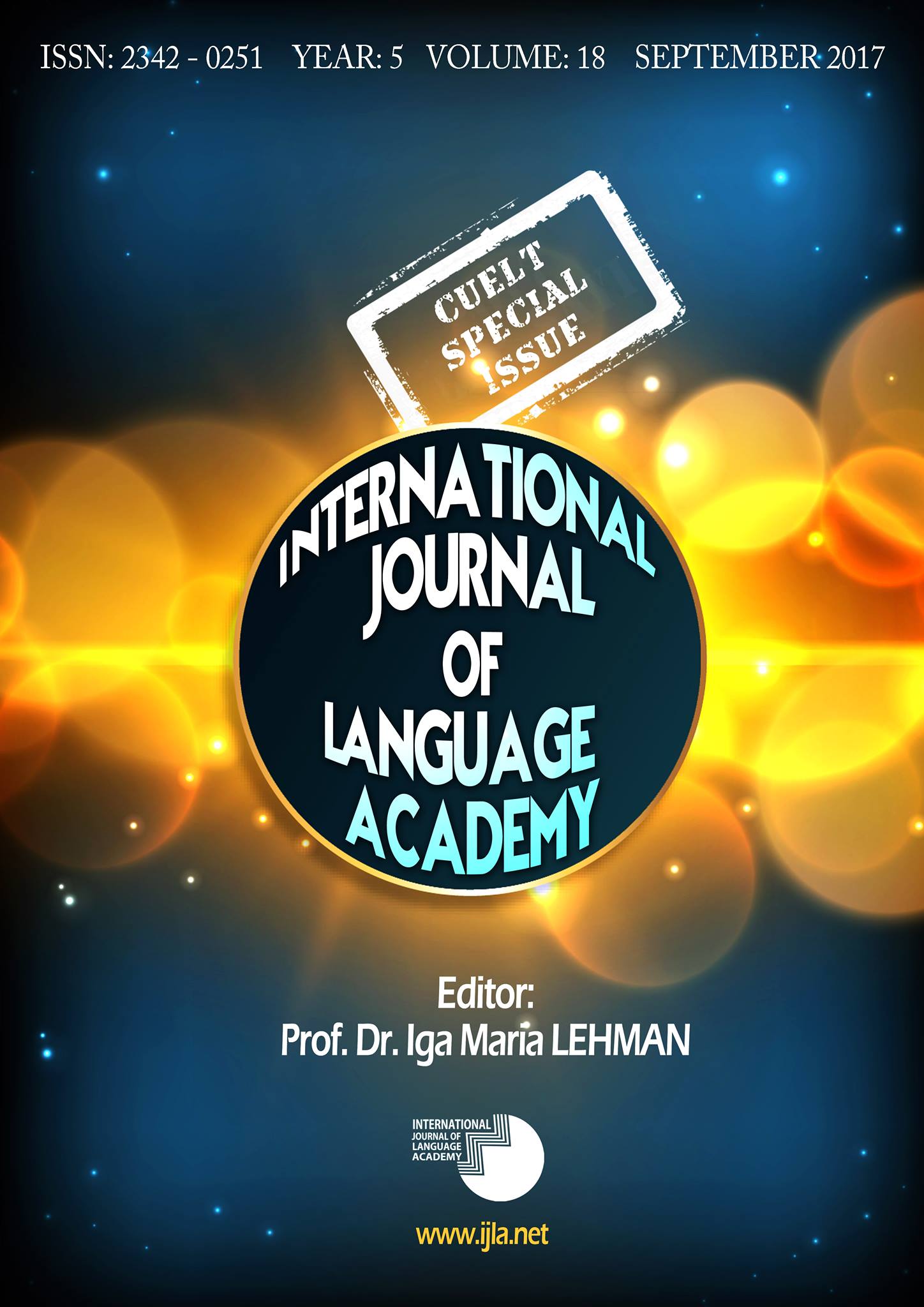EDİMSEL YETİ VE GÖREV-TEMELLİ DİL ÖĞRETİMİ: İLETİŞİMSEL İŞLEVLERİN TÜRK YABANCI DİL ÖĞRETİMİ BAĞLAMINDA ÖĞRETİMİNİN ÖNEMİ
Author :
Abstract
Bu betimleyici çalışma, İngilizcenin yabancı dil olarak öğrenildiği sınıflarda, Görev-Temelli Dil Öğretiminin nasıl uygulanacağına ışık tutmayı amaçlamaktadır. Çoğu yabancı dil öğretimi alanında ve Türkiye’de de olduğu gibi iletişimsel yeti göz ardı edildiği ve sadece dilbilgisi yetisi önemsendiği için yabancı dil öğretiminde edim bilim çalışmaları çok gelişen ve canlı bir araştırma alanına sahiptir. Yabancı dil öğretmenlerinin sınıfta çoğunlukla yaptığı şey sadece dilbilgisi öğretimidir, bu her ne kadar inkâr edilemez şekilde önemli olsa da etkili iletişim becerilerinin öğretimini olası kılmamaktadır. Öğrenci projeleriyle sınıf içi tartışmalarla hem yapı, işlev ve de etkinin doğal dil kullanımıyla dilin “yapısal, işlevsel ve etkisel gücünün öğretimi, öğrencileri etkili iletişim kurabilenler haline getirebilir. 1980 lerde İletişimsel Dil Öğretimi ortaya çıktıktan sonra, günümüzde, en azından otuz yıldır, bu alanda uğraşan insanlar İletişimsel Yaklaşımın eksikliklerini giderme peşindedirler. İletişimse yöntemin eksikliklerini gidermede pek çok metod üretilmiş olmasına rağmen, İletişimsel yöntemin çok az bir bölümüne katkı sağlamıştır. Diğer yandan Prabhu tarafından dil öğretimi çevrelerine sunulan Görev-Temelli Dil Öğretimi İletişimsel yöntemin geride bıraktığı eksiklikleri tamamlamada geniş bir alana hitap etmektedir. Bu nedenle, bu özel çalışma, ders kitapları analizi ve sınıf gözlemleri aracılığıyla Türk Yabancı Dil Öğretmenlerinin farkındalığını artırmanın yollarını arayacaktır. Kısa vadede, mevcut çalışma Yapı Öğretimine Odaklanma dil öğretiminin sonucunda ortaya çıkan sorunların üstesinden gelmek için çözümler sunacaktır.
Keywords
Abstract
This descriptive study aims to shed light on how to implement Task-Based Language Teaching (TBLT) in teaching pragmatic competence in Turkish EFL classrooms. The study of the development of L2 pragmatics is a promising and a vibrant area of investigation since in many of the L2 environments, Turkey being an example, communicative competence is a neglected area with the focus being on grammatical competence. What language teachers are doing in classrooms is often the teaching of grammar rules, undeniably important but never ensure the teaching of effective communicative skills alone. The teaching of “structural, functional and affective” power of the language in actual use through student projects and classroom discussion of both on the structure, the function and the effect may well help learners to become effective communicators. After the emergence of Communicative Language Teaching (CLT) in 1980s, today, at least in the last three decades, people in the field are in search of improving the shortcomings of CLT. Though a number of methods have been introduced on overcoming the limitations of CLT, they only serve to complement a very small area of the gap attributed to CLT. On the other hand, TBLT, introduced to language teaching market by Prabhu, embraces quite a large area that CLT has left behind. This specific study will, thus, search for ways to raise awareness of Turkish EFL teachers through course book analysis and classroom observations. In the short term, the current study will present solutions to overcome the problems arising as a result of “Focus on FormS” understanding of language teaching.





